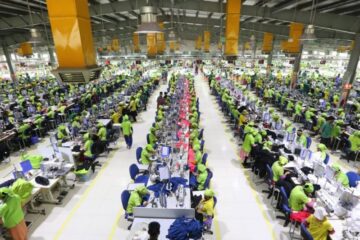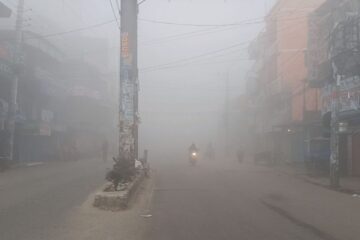Religious parties are more visible in Bangladesh’s pre-election landscape than at any time in recent memory, with campaign strategies now tethered to a single question: will the July Charter’s vision of a bicameral parliament become real before or soon after the 13th national polls?
Leaders of several Islamic parties say the answer could determine whether they contest alone to build a vote share for a proportional upper house, or join larger alliances if the second chamber ends up seat-based.
In conversations with Dhaka Tribune, senior figures across the spectrum said they are preparing on both tracks.
If an upper house elected by proportional representation materializes, smaller parties see an opening to convert even modest national vote shares into seats.
If not, most expect to negotiate with bigger blocs to avoid being squeezed in first-past-the-post contests.
Several parties have already named prospective candidates and begun vetting slates, while keeping alliance talks warm.
Beyond Jamaat-e-Islami, which remains a singular force in this space, 15 Islamic parties are registered with the Election Commission, and at least two dozen more operate without registration.
Their street presence has been consistent on religious and social issues, but their conversion rate at the ballot box has historically been thin: in the last three decades, Islamic parties running on their own banners have won just two constituencies outright.
Leaders counter that their vote banks have often proved decisive in alliance arithmetic, pointing to second- and third-place finishes in a clutch of seats and arguing that a unified slate, or a credible proportional upper house, could change the math.
“There is a tide around Islamic parties after July,” argued Maulana Ataullah Amin of Bangladesh Khilafat Majlis, predicting his camp could field viable contenders in “at least a hundred” constituencies, even as final decisions on alliances remain pending.
Others are more cautious.
Dhaka University’s Muhammad Golam Rabbani, professor in the Department of Urdu, said that Bangladeshi voters often decide late and are swayed by candidate quality and local networks.
He added that the mobilization of madrasa students and teachers during the July movement may give some religious parties fresh momentum, but that public sentiment must be tested in real contests.
The strategic split is visible across organizations.
Qawmi-leaning groups say they have prepared full or near-full slates but will entertain seat-sharing if an Islamic front coheres.
Leaders of Islami Andolan Bangladesh say they are ready to run in all 300 seats under their fan symbol while remaining open to “larger Islamic alignment” in select constituencies.
Khelafat Majlis has published expansive lists of intended contenders and is weighing both a solo push and coordination with like-minded parties.
Jamiat Ulema-e-Islam Bangladesh points to scattered pockets of strength in Sylhet, the southwest and parts of Rangpur, arguing that consolidated Qawmi votes could make several races competitive.
Sufi-oriented Sunni parties are probing a different path, with Islamic Front Bangladesh, Bangladesh Islamic Front and Bangladesh Supreme Party advancing talks on a Greater Sunni Alliance.
Their leaders concede that past returns were modest but say cohesive branding, charismatic peers from major darbars, and disciplined local committees can translate into higher shares if the field fragments.
Zaker Party, rooted in the Atrashi Darbar, cites a handful of past strong second-place finishes as proof that concentrated follower bases can matter in close races.
Unregistered outfits remain active as well, announcing provisional slates and pressing to influence alliances even if they cannot contest under their own names.
Some have floated independent or “friendly” candidacies where registration questions bar party symbols, hoping to demonstrate vote-getting capacity ahead of any upper-house dealmaking.
This burst of activity also reflects a changed political grammar.
The July Charter has reframed electioneering around institutional design, upper house composition, proportional versus seat-based allocation, and transitional mechanisms, rather than only around constituency-level patronage.
For Islamic parties, proportional representation in an upper chamber is a rare structural lever: even a five to seven percent national vote, long too thin to break first-past-the-post, could yield formal representation.
That prospect is why many are eyeing solo runs to bank every ballot under their own symbols.
Conversely, if the upper house is ultimately seat-based, mirroring lower-house logic, these parties are likely to revert to coalition math and bargain for winnable constituencies and policy concessions.
Yet structural hopes must contend with stubborn arithmetic.
Outside a few strongholds, religious parties split similar constituencies, Qawmi, Sunni-Sufi, and smaller Islamist platforms often compete for overlapping bases, diluting each other’s returns.
Past general elections show that where these parties ran multiple candidates, their combined vote would still have fallen short of the winner in most seats.
That is why senior organizers say two conditions will decide outcomes: credible seat understandings among themselves, and clarity, before ballots are printed, on how any upper house would be elected.
For now, candidate announcements serve as both signaling and leverage.
Publishing long lists creates an impression of readiness, reassures volunteers, and strengthens bargaining positions in alliance talks.
It also tests public appetite: early reactions from local shuras, mosque committees, and professional guilds inform whether to double down in a seat or trade it in negotiations.
Several leaders acknowledged that some marquee names may shift constituencies or step aside if a unified front takes shape.
Analysts say the broader environment matters just as much. If the election calendar compresses and voters gravitate to the most recognizable national platforms, smaller parties could be crowded out.
If the campaign stretches and issue salience grows, on education policy, cost of living, and post-July institutional reforms, discipline and door-to-door networks could narrow gaps.
Either way, the bicameral question has given religious parties a strategic horizon beyond a single Election Day, encouraging them to bank votes this cycle with an eye on possible proportional representation in the next.
Islamic parties are campaigning on two rails at once: a solo push to amass measurable national vote shares that could matter in a proportional upper house, and a parallel readiness to cut deals for winnable constituencies if seat-based rules prevail.
Whether that dual strategy translates into seats, and lasting parliamentary relevance, now hinges on the shape of any upper-house settlement, the cohesiveness of their alliances, and their ability to turn visible street energy into counted votes.



